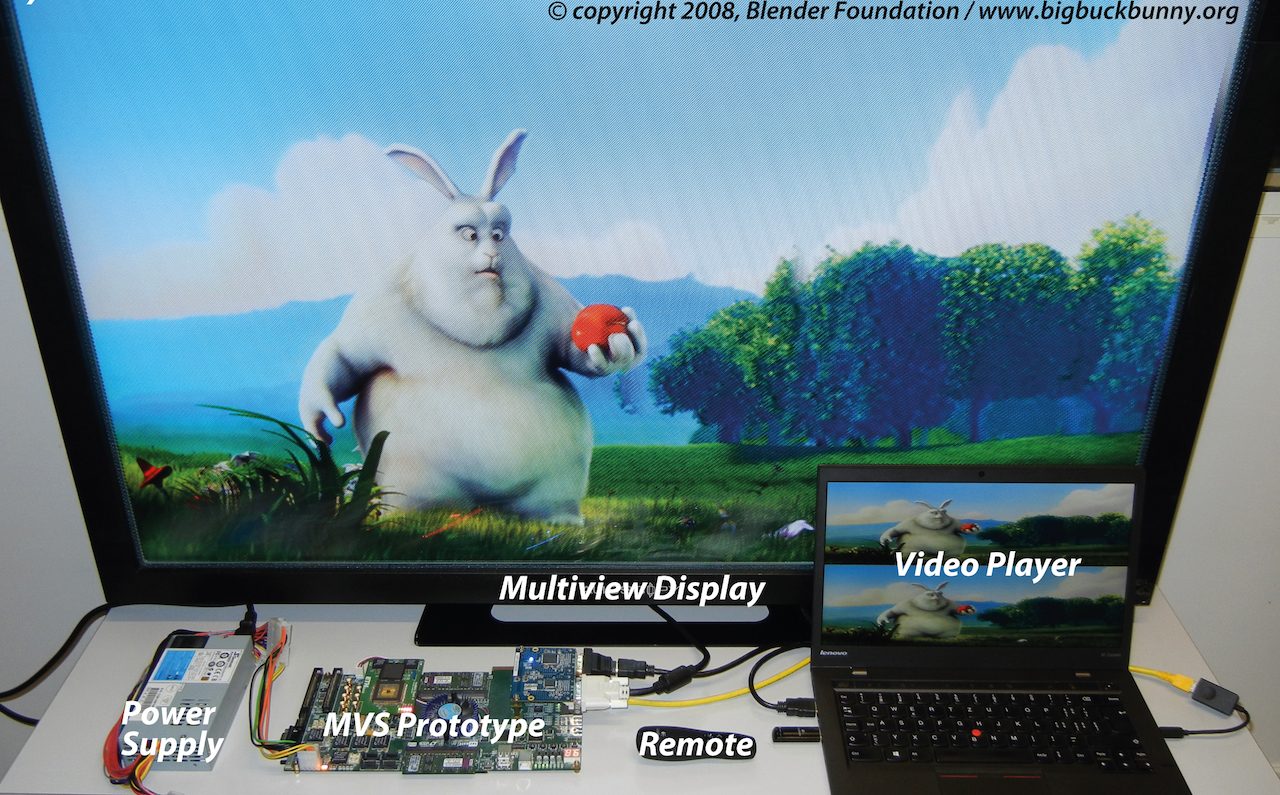Disney (2013-2016)

The Digital Circuits and Systems group in collaboration with Disney Research was involved in a project on “Hardware Studies on Optimum Content Creation for Multiview Autostereoscopic Displays” which has resulted in several high-profile publications and very popular demonstrations. The main goal of the project was to develop efficient hardware systems that can map stereo video streams into multiview streams in real-time.
Current three dimensional video systems have the drawback that the viewers must wear glasses in order to perceive depth effects. Furthermore, they cannot convey other depth cues such as motion parallax. A new generation of displays - so called multiview automultiscopic displays (MADs) - do not suffer from those problems. They project several images simultaneously into different spatial directions allowing the viewers to see two different images with both eyes. The viewers can also experience a limited motion parallax by moving around the different viewing zones. At present most three dimensional video footage is captured in stereoscopic 3D (S3D) format. So called multiview synthesis methods are employed to generate the large amount of views that are required to operate MADs.
At the Digital Circuits and Systems group we have developed prototypes based on our own ASICs and FPGA platforms that allowed us to achieve this conversion at full HD resolution with 30 frames per second.
Links
- external pageDisney Research Laboratory, Zürichcall_made
- external pageAutomatic Multiview Synthesis Videocall_made
- Research summary page of Michael Schaffner from IIS
